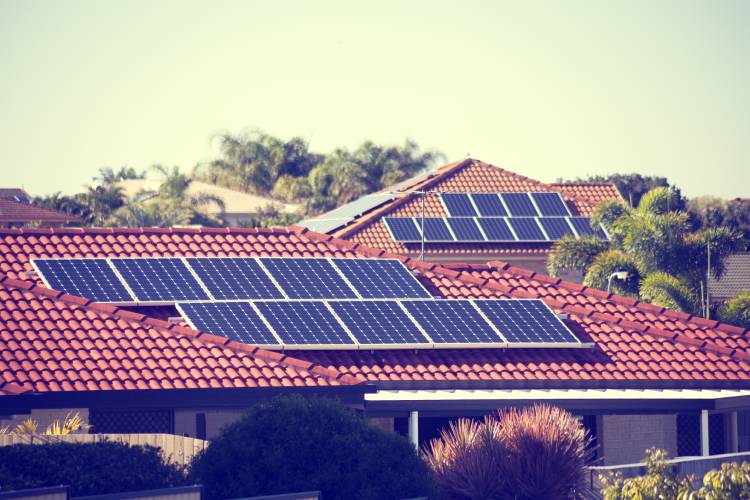Empowering Off-Grid Communities: The Potential of Solar Home Systems for Remote Areas

Millions worldwide grapple with the daily struggle of living “off-grid,” lacking access to the power grid’s life-changing electricity. Imagine remote communities, far from the reach of power lines, where darkness descends early, and basic needs like lighting, communication, and refrigeration remain elusive. Enter solar power, a beacon of hope shining brightly with the potential to transform these communities.
By harnessing the sun’s energy through solar panels, off-grid solar power systems offer a clean, sustainable, and reliable energy source. Independent of the grid, these systems utilize photovoltaic (PV) technology to convert sunlight into DC power, which an inverter transforms into usable AC power. With the addition of a battery bank for energy storage, these solar energy storage systems provide a constant flow of power, empowering individuals and communities in remote locations.
This shift from unreliable generators or limited access to renewable energy unlocks a brighter future, paving the way for improved education, healthcare, and economic opportunities. So, let’s explore the potential of remote solar and how it can empower off-grid communities, one sunbeam at a time.
The Power Gap in Remote Areas: Where Traditional Solutions Fall Short
Roughly 771 million people globally, concentrated primarily in rural and remote areas, still lack access to energy grids – this translates to daily challenges impacting basic needs and opportunities. Imagine evenings bathed in darkness, hindering children’s education and limiting communication access. Refrigeration, crucial for preserving food and medicine, remains out of reach, impacting health and livelihoods. Traditional power grid extension often proves impractical and expensive in these regions, facing geographical constraints and environmental concerns. While stand-alone solar power systems have emerged as off-grid energy solutions, the initial investment and technical needs require further exploration to bridge this power gap.
Statistics paint a stark picture: the World Bank estimates that 67% of those lacking access to electricity reside in sub-Saharan Africa. At the same time, the International Energy Agency reports that 84% of unelectrified populations live in rural areas. These communities rely on limited options like kerosene lamps and diesel generators or even live entirely off-grid with no reliable power source from energy systems.
The consequences are far-reaching, affecting education, healthcare, economic activity, and overall quality of life. While home solar systems offer a glimmer of hope, the initial cost, technical expertise, and maintenance needs present significant hurdles. Exploring innovative financing models, capacity-building initiatives, and advancements in solar photovoltaic technology are crucial steps to unlock the full potential of off-grid solar energy in empowering these remote communities.
Harnessing the Sun: Solar as a Game-Changer
Imagine harnessing the boundless energy of the sun to power your home, independent of power lines or generators. This empowering vision becomes reality with solar energy, a clean, renewable, and abundant power source. Unlike fossil fuels, solar energy doesn’t contribute to greenhouse gas emissions and offers a sustainable solution for the future.
The key to capturing this energy lies in solar panels, the workhorses of a solar power system. Each panel is packed with numerous silicon photovoltaic (PV) cells. When sunlight strikes these cells, it knocks electrons loose, creating a direct current (DC) electricity flow. This DC electricity travels through a charge controller, which regulates its flow and protects the battery. A vital component in off-grid solar systems, the battery stores this captured energy for use during the night or on cloudy days. Finally, an inverter converts the stored DC power into usable alternating current (AC) electricity, compatible with appliances in your home.
Solar energy isn’t the only renewable option; it shines brightly for remote and off-grid locations. Wind power, for example, requires consistent wind speeds, often unavailable in many remote areas. Hydropower depends on reliable water sources, which may be scarce in these regions. In comparison, solar panels utilize readily available sunlight, making them a versatile and adaptable solution.
A basic solar panel system typically includes components, system kits, and additional features to tailor the system to specific energy needs. From powering basic lighting and communication devices to running essential appliances, off-grid solar systems offer a degree of power independence rarely achievable in remote locations.
Empowering with Off-Grid Solar Solutions: A Brighter Future for Remote Communities
Off-grid solar power systems offer hope for remote communities, unshackling them from dependence on unreliable grid connections or expensive generators. These systems, harnessing the sun’s abundant energy through solar panels, function independently of the primary grid. Critical components like a charge controller regulate power flow, a battery stores captured energy, and an inverter converts it into usable AC electricity, empowering homes with remote solar.
Small-scale systems cater to individual households, providing essential power for lighting, phone charging, and small appliances. Larger microgrids can serve entire communities, powering essential services like clinics and schools. Community-based ownership models foster collective responsibility and economic opportunities. Regardless of size, these systems offer several advantages:
- Independence: Freedom from unreliable grid connections or dependence on fluctuating fuel prices for generators.
- Reliability: Consistent power generation, even during outages affecting the main grid.
- Environmental benefits: Reduced reliance on fossil fuels, contributing to cleaner air, and combating climate change.
Imagine the simple yet transformative impact: lighting replaces kerosene lamps, enabling children to study after dark. Refrigeration preserves food and medicine, improving health outcomes. Communication devices connect communities to vital information and markets, fostering economic development. With solar, even remote areas can unlock basic needs and opportunities, paving the way for a brighter future.
Unlocking the Potential: Challenges and Considerations
While off-grid solar systems offer immense potential, implementing them in remote areas presents unique challenges. The initial cost of purchasing and installing the system can be a significant barrier for communities with limited resources. Additionally, remote locations can make maintenance and access to technical repair expertise complex. Energy storage through batteries is crucial for off-grid systems, but battery technology is still evolving, and finding the right size and type for specific needs can be complex.
However, innovative solutions are emerging to address these challenges. Microfinance models and subsidies are making solar systems more accessible. Capacity-building initiatives train local communities to install and maintain systems and foster self-reliance. Technological advancements are continuously improving battery efficiency and affordability.
Igniting a Brighter Future with Solar Power Systems
In remote areas where the challenges of maintaining and securing residential properties are magnified, home inspections become indispensable for homeowners seeking peace of mind and community well-being. HomeGuard, a trusted name in comprehensive home inspections, plays a crucial role in these regions by meticulously assessing structural integrity, identifying potential safety hazards, and ensuring that homes meet the necessary standards. The significance of such inspections is heightened in remote areas where access to repair services and resources can be limited. By engaging HomeGuard, residents can proactively address issues before they escalate, contributing to the overall resilience of their homes and communities.
When considering the unique energy needs of remote areas, integrating solar home systems emerges as a transformative solution. These systems provide an independent and sustainable energy source, reducing reliance on conventional power grids that might be absent or unreliable. Although HomeGuard does not inspect solar home systems, its overarching home inspections are critical in ensuring that the structures housing these systems are well-maintained and safe. By upholding the integrity of the overall property, homeowners in remote areas can fully leverage the benefits of solar energy, fostering a more sustainable and self-sufficient living environment. The synergy between HomeGuard’s thorough inspections and the adoption of solar home systems contributes to the overall well-being and resilience of homes in remote areas.
Home Inspection, Termite Inspection, Roof Inspection, Sewer Lateral Inspection, and Natural Hazard Disclosures for California’s urban and rural regions
We offer a wide range of services, including home inspections, roof and termite repairs, permit pulling, and project management. If you’re unsure where to begin, consider hiring a reputable home inspection company and termite inspection company for a professional assessment of your home’s health.



